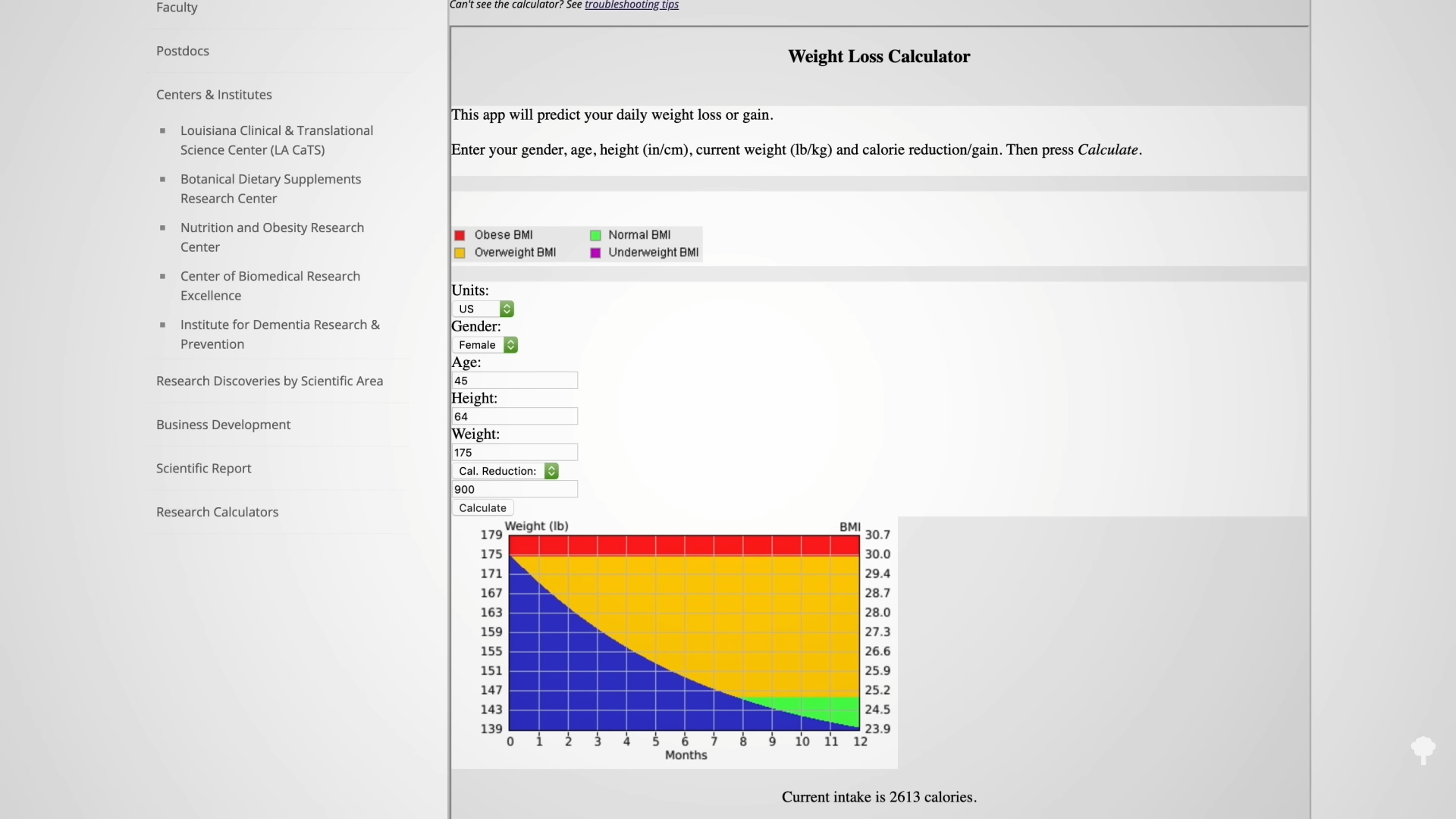You may lose a pound of fat by skipping just 10 calories a day or as many as 55, depending on whether you’re improving food quality or restricting food quantity.
If the 3,500 calories per pound of weight loss rule is bunk, what’s the alternative? To lose a pound of fat, how many fewer calories do you have to eat or how many more do you have to burn? That’s the topic of my video The New Calories per Pound of Weight Loss Rule.
There are validated mathematical models that take into account the dynamic changes that occur when you cut calories, such as the metabolic slowdown, and they’ve been turned into free online calculators you can use to make personalized estimates. For instance, one is the Body Weight Planner from the National Institutes of Health (http://bit.ly/NIHcalculator) and another is the Pennington Biomedical Research Center’s Weight Loss Predictor Calculator out of Louisiana State University (http://bit.ly/LSUcalculator).
The NIH Body Weight Planner has been found to be more accurate because the LSU model appears to overestimate the drop in physical activity, but they both have their own pluses and minuses. The NIH Body Weight Planner tells you how many calories you need to restrict and/or how much more you need to exercise to achieve a specific weight-loss goal by a specific date. If you click on the “Switch to Expert Mode” button, you can get a graph and exportable chart showing your day-to-day weight-loss trajectory. See below and at 1:15 in my video to see the Body Weight Planner.

For instance, if you are a middle-aged, sedentary, average-height woman who is obese at 175 pounds and wants to be closer to her ideal weight within a year, consuming 2,000 calories a day would prevent future weight gain and taking in about 1,400 calories a day would bring down your weight, and you could maintain that lower weight at 1,700 calories a day. If you also walked a mile a day, you’d have a little more calorie leeway.
The LSU Weight Loss Predictor, however, doesn’t allow you to tweak physical activity, but its advantage is that you don’t have to choose a goal or time frame. Just put in different calorie changes, and it graphs out your expected course, as you can see in the graph below and at 2:00 in my video.

Is there an easy rule of thumb you can use? Yes. Every permanent ten-calorie drop in daily intake will eventually lead to about one pound of weight loss, though it takes about a year to achieve half the total weight change and around three years to completely settle into the new weight. So, cutting 500 calories a day can cause the 50-pound weight loss predicted by the 3,500-Calorie Rule, but that’s the total weight loss at which you plateau, not an annual drop, and it takes about three years to get there. A 500-calorie deficit would be expected to cause about a 25-pound weight loss in the first year, followed by an additional 25 pounds lost over years two and three, but that’s only if you can maintain the 500-calorie deficit, as you can see in the graph below and at 2:38 in my video.

If you’re eating the same diet that led to the original weight problem but just in smaller servings, you should expect your appetite to rev up by about 45 calories per pound lost. So, if you were cutting 500 calories a day through portion control alone, even before you were down a dozen pounds, you’d feel so famished that you’d be driven to eat 500 more calories a day and your weight loss could vanish. For this reason, if you’re dead set on eating the same diet with the same foods, just in smaller quantities, you have to cut down an additional 45 calories per pound of desired weight loss to offset your hunger drive.
So, to take off that one pound, instead of consuming just 10 fewer calories a day using the 10 Calories per Pound Rule, you’d have to eat 10 fewer calories on top of the 45 fewer calories to account for the revving up of your appetite. Thus, it would be 10 + 45 = 55 fewer calories. Indeed, just by changing diet quantity and not quality, it takes 55 fewer calories per day to lose a pound, so that daily 500-calorie deficit would only net you about a 9-pound weight loss over time instead of 50 pounds. That’s why portion control methods can be such a frustrating failure for so many people.
If you missed my first two videos on calories per pound, check out The 3,500 Calorie per Pound Rule Is Wrong and The Reason Weight Loss Plateaus When You Diet.
I have loads of other weight-loss videos, which you can see here on the topic page, and there are gazillions more coming soon, based on my book How Not to Diet.
